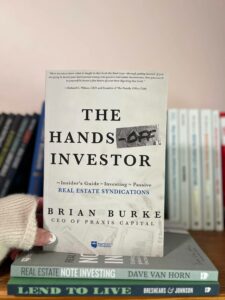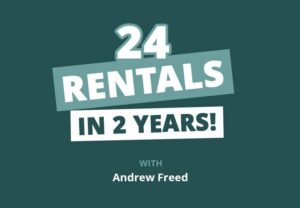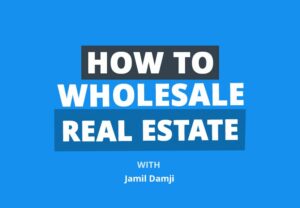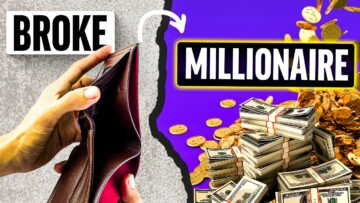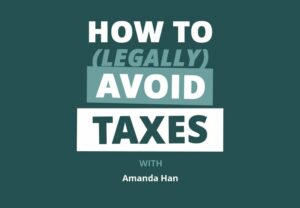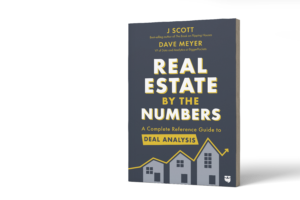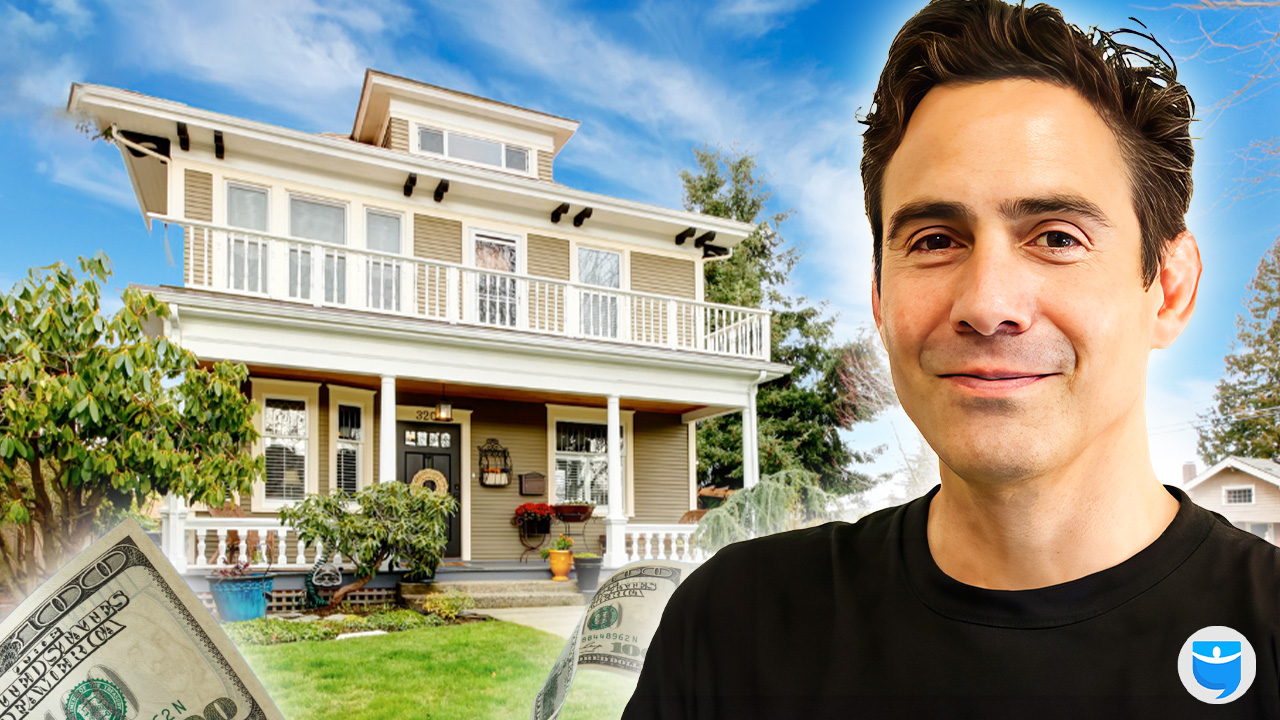
Do you want to make $50,000 in six weeks? Even in this housing market, it’s more than possible. You might think we’re bluffing; with high mortgage rates, little-to-no inventory, and buyer demand down from its peak, most real estate investors believe the market is a graveyard, but they’re wrong. In today’s show, we talk to Mike Cappello, who has been doing a few quick house flips and making an unbelievable return.
But that’s not all. We’ll also talk to the agent who found the deal, Rob Chevez, about what’s making the most money in the “extremely competitive” market of Washington, D.C. The duo will discuss why D.C. is such a solid market to buy, hold, or flip in, the “buy box” they designed to find the most profitable house flips, and how they’re financing deals EVEN with today’s sky-high interest rates.
We’ll also get into the nitty gritty of Mike’s latest deal, the one that could make him $50,000 in just six weeks, and the exact steps to follow if YOU want to do a deal like this in your market. The real estate deals are here; stick around to learn how to find ‘em!
Click here to listen on Apple Podcasts.
Listen to the Podcast Here
Read the Transcript Here
Rob:
Welcome to the BiggerPockets Real Estate Podcast Episode 860. Today we’re doing something a bit unique. My good friend David and I are actually going to be splitting up and bringing you two separate interviews. Each episode is going to feature a boots on the ground investor and real estate agent who are doing deals in today’s market. That’s right, doing deals in the ominous 2023 market. Ooh.
We’re going to hear from Mike, an investor in the Washington D.C area who’s making a profit flipping properties, which is really interesting actually because flipping properties is a very risky strategy in today’s market. So we’re going to walk through one of Mike’s deals and discuss what best practices and strategies he’s using to make these deals pencil out, A.K.A, what is he doing to not lose money on his flips? You’re going to also be hearing from Mike’s real estate agent, Rob Chavez. He’s going to discuss market conditions sourcing this deal in the process of working with real estate investors. Rob is actually one of the featured agents on the BiggerPockets Agent Finder. This tool helps investors like you find real estate agents that are trained in the world of investing in their specific market. So visit BiggerPockets.com/agentfinder to learn more. And by the way, if you want to listen to my partner in crime, David Greene’s solo episode, then you’re going to want to be on the lookout for the next episode coming out later this week. Without further ado, let’s bring in Mike and Rob.
Rob, welcome to the show. I want to talk about the metrics of this market. And to start the show off today, can you tell us a little bit about yourself as a real estate agent and what market are you focused in at the moment?
Rob Chevez:
I’m n agent with Keller Williams Realty in Reston, Virginia, which is just 30 minutes outside of D.C area. We really cover the DMV area. So D.C., Maryland, Virginia, kind of DMV is what we call it. But I specifically focus on Fairfax County, Loudoun County, and that’s kind of our backyard.
Rob:
Yeah. So that seems like a pretty big market for Maryland down to Virginia, just thinking about it. How big is that market if you were going to drive from one end to the other?
Rob Chevez:
Hour and a half, maybe max. But it’s incredibly dense. That’s the thing.
Rob:
Okay.
Rob Chevez:
Reston alone where I am, there’s 60,000 houses and it’s a little pin drop in all of the DMV area.
Rob:
Can you give us a little bit of a, I guess, an overview of what it looks like for days on the market in the D.C market area specifically?
Rob Chevez:
I mean it’s under 30 right now. Now, there’s pockets, Rob. It’s like everything, there’s pockets, but I’ll give you an example. In Reston right now, we are at 17 days on market superfast, still going. And just to give you perspective, we listed two properties over the weekend. One had six offers. One had three offers. All of them were still multiple contracts. Now, I know some of my brothers and sisters that are listening right now in different parts of the DMV market are like, “Well, I’m not experiencing that.” You’re not experiencing that in condos in D.C proper. That’s months on the market, the average days on market, right? So it’s such an incredibly dense area. Every area is slightly different.
Rob:
So yeah, let’s talk about that. The market conditions are obviously changing quite a bit. And it sounds like based on that you just said, 17 to 30 days depending on what pocket you’re in, how is that different from a couple of years ago when we were really at the peak of this real estate cycle?
Rob Chevez:
Well, it was two or three days on the market. I mean, when I’m telling you days on the market, were like five days. That was it.
Rob:
Wow.
Rob Chevez:
Right?
Rob:
Yeah.
Rob Chevez:
So it’s slowing down, but Rob, it’s still incredibly fast. Just to put in perspective, a conversation I was having with one of my agents, he was out of all the contracts, more than half were still cash.
Rob:
Wow. Really?
Rob Chevez:
And so there’s still a lot of pent-up demand that’s out there, at least in the DMV area.
Rob:
So do you think that this market, given that there’s so many cash offers and the fact that the days are still relatively low, 17 to 30 like we were talking about, is this a competitive market for first-time home buyers and investors?
Rob Chevez:
Well, extremely competitive.
Rob:
I guess my question is, obviously things have shifted from days on market a little bit more. It sounds like things are flying off the shelf if it’s a great deal. Tell me a little bit about how the interest rates have impacted investors in today’s market.
Rob Chevez:
Oh, yeah. I mean, it’s definitely dampened anybody that’s tried to make their buy and whole numbers work. So different strategies need to get employed. We’re starting to see people doing a lot more creative financing, or financing sub2 buying sub 2s. A lot of people that originally started buying Airbnbs, Rob, early last year, then started finishing the projects this year, they were like, “Oh my God, I started this project when we’re like 4.5% interest rate. By the time I got done with the project,” and Mike and I have a couple projects like that, “they were at 7.5%.” And so people are waiting. By the way, some of those investors have just kind of extended with their private lenders waiting for interest rates, hoping that some of those interest rates drop sometime next year to then refinance out.
Rob:
So if I’m hearing you correctly, it sounds like a lot of people that were doing BRRRRs into short-term rentals, we call them BRRRRs-ters, they kind of went into this market like a year ago or so with a different, I guess, view of what they thought rates would do. And now they’re finally finishing up some of these bigger renovations that have been taking place over the last six to 12 months. Rates are a lot higher, and so we’re seeing a lot of people somewhat pivot their strategy.
Rob Chevez:
Pivot their strategy to midterm, extending working out deals with some of their private lenders to kind of extend their terms. Those will be the biggest I’ve seen.
Rob:
And for anyone not familiar, a short-term rental, obviously that’s going to be anything that’s from one to 30 days. But a midterm rental is anything that is 30 days or more. And the big differentiator is usually midterm rentals are fully furnished units that people are renting for 30, 60, 90 days, oftentimes more than that too. Whereas with the long-term rental, it’s typically like a 12-month lease unfurnished and the tenant is actually paying their own bills and everything like that. So kind of interesting to see a lot of strategies are changing. And so with the big change in interest rates and days on market, competitive nature is still there, I want to get into a little bit why invest in this market, and I want to talk a little bit about you as well.
Rob, you brought in one of your clients today, Mike, who you’ve actually worked with several times in this specific market. Mike, how long have you been investing for and how long have you been working with Rob?
Mike:
It’s funny, I’m here actually because I just have really started in the last year and I feel like it was just yesterday I was listening to BiggerPockets and soaking all this information in. And so for me, it’s only been 18 months, two years that I’ve been doing it full time. So I’m still fairly green. Rob and I have done a handful of deals together. He was one of the first people I ran to when I decided to make the full-time jump into real estate investing. So he’s committed by my side throughout the whole process.
Rob:
Wow. And you said you have been doing this for just a year in the real estate game?
Mike:
Yeah, a little over a year, full-time. I’ve kind of dabbled with it outside of professionally for a number of years and actually got licensed at one point and tried the retail game a little bit, but my heart was really pushing me towards full-time, real estate investing. So yeah, the reality is it’s only been about 16, 18 months that I’ve been doing this full time.
Rob:
That’s amazing. All right. So give us a quick snapshot of your portfolio. What have you accomplished in your short time real estate? Because honestly, it’s amazing, man, if you didn’t start too long ago, you’re on the BiggerPockets podcast telling your story. Tell us what you’ve done.
Mike:
Talk about surreal, really. I’ve been thinking about that a lot. I’m like, I can’t believe. I thought it was a joke honestly. Rob likes to pull my leg from time to time. So part of me was like, “Rob, are you…” But yeah, in the last 16, 18 months, a lot of my strategy has been wholesale fix and flip, kind of sell simply is sort of my acquisition sales business. So I use that to market direct to seller and then take those opportunities wholesales on we’ve done some fix and flip. And then we’ve been acquiring using creative finance for the last year or so. We’ve picked up five sub2s, a couple cash, and handful of flips as well in the last year, year and a half.
Rob Chevez:
Mike’s done a really good job and he’s being humble right now. In the last 12 months, he’s put together 10 amazing deals. And I want to say it wasn’t like five sub2s. It’s like eight sub2s. And I want to say, Mike, you’ve done four solid renos that have all been 40,000 to 50,000 plus deals like the one we’re going to talk about today.
Rob:
Cool. So let’s punch into this a little bit. You’ve mentioned creative finance and sub2. For anyone at home that’s not really familiar with that, what exactly is creative finance in a very quick nutshell here?
Mike:
Creative finance is an overarching term for buying unconventional means. So when we say sub2, what we’re talking about is buying a property and essentially leaving the original property owner’s mortgage in place and taking title to the property. So that loan that’s existing will stay in the seller’s name and we take title of the property as well as their existing loan interest rate. We make those payments, service those payments. So it’s been a good strategy for us this past year with the hike and interest rates. We’re getting rates at 2, 3% or better. It’s been wild, but-
Rob:
It’s crazy. Cool.
Mike:
… it’s working for us, so we’re pressing that button pretty hard right now.
Rob:
Yeah, for sure. So I want to get into your buy box here in a second. Before we do, Mike, obviously you’re a prolific investor in the D.C area. So just tell me off the why do you like this area? What’s the vibe? What’s your favorite thing about investing here?
Mike:
Yeah, I mean for me it’s my hometown, so it’s my backyard. I’ve thought about making moves to other markets, but for me it’s like I’m still green. I’m learning the market. And for me, the easiest way to do that is here at home. I love the area. I’ve grown up here, so I’m partial as far as what all it has. I mean, it has everything to me, my family. It’s a couple hours to the beach. It’s a couple hours to the mountains and the river, and so everything’s here for me. It’s an appreciating market. Cash flow is a little bit tough, but we’re looking at it from a long-term perspective. It’s a great market to buy and hold.
Rob:
Very cool. Well, I think we can probably start shedding the green investor title off of you since you’ve done so much here in 16 to 18 months, but let’s talk about your buy box. Okay, so Mike, what buy box did you bring Rob for this investment property that we’re going to be talking about today?
Mike:
Yeah. So we’re still, again, fairly new in our fixing and flipping. So we’re looking for opportunities to fix and flip in Northern Virginia. And so we’re looking kind of smaller renovations townhouses, 200 to 400K purchase price, 50 to 100K reno, something that we can buy around 200, put 50 into, which is sort of what this deal is like, and then sell it on the back end for 350, 400. Two, three bedroom, one to two bath under 3,000-sq ft.
Rob:
So for anyone at home that’s never really sat down and thought about what your buy box is, this is something that I think a lot of investors kind of figure out as they go. And it’s effectively the criteria that you want to abide by whenever you’re considering a property. So Mike, you sort of talked about this purchase price being the 200,000, 250,000. How did you actually arrive at this specific buy box? Did you just find that from a risk standpoint, 200,000 to 250,000 is not a huge risk for the types of profits that you were bringing in? What was your thought process there?
Mike:
I’ve talked to some lenders who had some money that we felt confident we could get at that price, so we were trying to keep it on the smaller scale side. So that’s sort of like entry level starter home in this area, 300K. So if we can come in around 200,000, that’s where we want to be. And you really can’t find anything much cheaper than that around here, frankly.
Rob Chevez:
Rob, one of the things that Mike and I had talked about was the first time home buyer market were still really moving fast. They didn’t suffer from having to know what interest rates were at 4 and 4.5%.
Rob:
Because they have no reference point, yeah.
Rob Chevez:
They have no reference point, right? So they’re coming in and the properties that he’s going after are perfect for first time home buyers and they just move quickly. So the reno could be done in another 30 days, the sale could happen in another 30 days. There’s not a ton of risk associated with it as long as you’re getting it at the right number.
Rob:
Well, now that we’ve learned about the market and Mike’s buy box, we’re going to talk through a flip property that Mike is currently working on. But first we’re going to take a quick break to hear from our sponsors.
Okay, everybody, welcome back to the show. Now that we’ve heard about the D.C market conditions, let’s get into the nuances of this deal. Rob, how did you go about finding options in this constrained market for Mike?
Rob Chevez:
Well, we knew that more than likely it wasn’t going to come from a property on the MLS, right? What we’ve been able to do over the last decade is build a network of bird dogs and wholesalers and pre-ambers and friends and family. And everybody knows that we’re always looking for assets that might be a good deal for one of our investors. And so this came from our network, Rob. We run a large investment network and somebody said, “Hey, I know of a pre-foreclosure that’s happening. It’s a family. They don’t have a lot of time.” And so I made Mike aware of it and then we got to work. It was a property, it was in an estate. It had a lot of heirs, so there was a lot of people that had to agree to it. And I think Mike, how much time did they have? I think we had 20 days to get it done.
Mike:
Yeah, it was just over two weeks.
Rob:
Wow.
Rob Chevez:
It was two weeks. Getting the money took us a couple days, but then getting it all through the estate was the hardest part. And trying to communicate directly with the pre-foreclosure attorneys wasn’t easy, but we just kind of pushed. It literally came down to the wire and I think it was like the day before the auction when we finally settled on it.
Mike:
Yeah. I was sweating bullets. I was sweating bullets. I thought we had about a week to make the payment, get the final payoff from the lender. Apparently with all the heirs involved, it just took a one-day pass, another day pass, and I just waiting for things to fall apart. But we were able to get it done. I mean, Rob helped me a lot push some buttons, and especially on the money side. We actually didn’t even have the exact payoff amount that we needed on that day. So Rob was like, “Just send the money.”
Rob:
Arguably important to know that information.
Mike:
Yeah. Yeah.
Rob:
So you end up working together, you find this off-market deal. Sounds like you’ve built a really great deal flow funnel where people are basically through your network sending you deals or coming across and you finally find this deal. You frantically close it, you find out how much you’re going to need to actually close on it. So we get to the finish line. Mike, tell us about the deal that you ended up purchasing. What type of property was it? Yeah, give us some of those details.
Mike:
Yeah, I mean from the get-go, I was like, “This is a good opportunity. It fits right within our buy box.” It’s a little two-level townhouse, three-bed, one and a half bath. I think it’s like 1,500 sq. ft. It’s not very big, fully cosmetic, kind of touched everything inside. It’s actually an HOA too so we didn’t even have to really do anything on the outside. And yeah, I mean the numbers just worked out well. We ended up putting on our contract at 212,500.
Rob:
So 212,500 bucks?
Mike:
Yeah. We’ll put just under 60,000 into it in rehab. And that’s like kitchen, baths, flooring, paint. And like I said, pretty much full cosmetic. We’ve got hard money on it. We’ve got closing costs. We should be in right around 300,000, just shy of 300,000. There’s really good comps at 350,000, so we should make 50K or so on it.
Rob:
So your ARV, your after repair value after you put everything into it, you said it’s 350,000?
Rob Chevez:
Yeah, between 350,000 and 375,000 depending on pricing. We always believe in just making sure that we’re pricing it right to create as much demand as possible. Even going into December, like I said, Rob, we just listed two properties where we just strategically price them, create an auction effect, and we know the buyer pool for this particular property. It’s going to go somewhere between 350,000 and 375,000. Low comps all day long, 350,000.
Rob:
Yeah. Let me ask you about that because a lot of people, obviously they’re running their numbers based on comps from the last six to 12 months. Things are changing quite a bit here. It seems like that’s a pretty healthy profit. But when you guys are working on a deal like this and underwriting it, are you planning out for any kind of like, “Hey, what’s my doomsday scenario?” Is there a doomsday scenario for this or do all the recent comps back up that 350,000 to 375,000 is actually a pretty reasonable amount to expect?
Rob Chevez:
It’s reasonable because this area is so dense, we could see all the volume of all the sales that are happening. We’ve purchased properties with Mike out in Front Royal, which is about an hour away from where we live. It’s a little bit slower, it takes a little bit longer. But where he put this one under contract, the velocity of sales is superfast and there’s a lot of them to look at. So doomsday would be 325,000. It’d be like, “What is going on at 325,000”? So at that, he covers his cost, he puts a few bucks in his pocket. It’s not crazy, but he’s not going to lose money on that.
Mike:
Yeah, this is a really quick one too. I mean we closed on it six weeks ago. I think they’re finishing up the reno. There was a little bit of a lag from the beginning of the reno getting in there and stuff because it was a pre foreclosure, it was bank owned. There were locks on. So there was a little bit of a lag between the time we bought it and the time they started, but it’s been a quick renovation. It should be on the market next week.
Rob:
Wow, that sounds pretty fast. So going into this, obviously you were in scramble mode trying to close on it, how did you feel going through the entire process of this type of property, this type of renovation? Were you confident? Was this still kind of during a time where you’re developing your confidence as an investor? Obviously a lot of people, 16 to 18 months, this is all new territory, but given that you sort of had a few under your belt, tell us a little bit about your mindset.
Mike:
Yeah, I mean I felt good about this one. The numbers to me just made sense. It’s in our backyard, which makes it helpful. And Rob has a lot of the resources here. So for me it was like putting it under contract. And from there it’s pretty hands-off, which is great. One of the reasons why I love working with Rob from contract to renovation to out-sale, it’s basically all in his hands. I mean, I’m there keeping an eye on things, checking in from time to time, but a lot of it is just kind of done for you.
Rob:
So Mike, tell me this. You said that you’ve spent 60,000 bucks for a full cosmetic flip. Sounds like you didn’t get behind there and do wiring and new plumbing or anything like that. So how long does it take to do a full cosmetic flip?
Mike:
Yeah, I mean, like I said, this one was pretty quick. It is in an HOA. So a lot of the stuff that maybe you might deal with in a single family or something, not within an HOA, we didn’t have to deal with. So roof, exterior, all that stuff was kind of all HOA responsibility. So we just went in, inspected everything. The systems looked decent enough to where we felt like we can move it with what’s there. We didn’t do any major electrical, plumbing, anything. We just kept everything where it was. Went in, ripped out the kitchen, put in new kitchen cabinets, new countertops. Same thing in the bathrooms, floors, paint. And they moved quick, I mean literally I think under six weeks for this one.
Rob Chevez:
And I would say six weeks is slow for the crews that we have to do that. Normally, that work should have been done in four weeks, but there was a delay because of the locks that the bank had put on the property and then tried to line up the contractors to get there. It didn’t look like it was going to happen at first. We hadn’t fully lined up the contractors like we probably should have. So there was about a week, week and a half time loss. Normally, as soon as you settle, boom, everybody’s in there doing work, but there was a little bit of a lag.
Rob:
Yeah. So let’s talk about you close on this. I want to talk about the next steps here. How did you actually secure the funding for a deal like this? It sounded like it was a frantic there at the finish line. So walk me through the financing of this.
Mike:
Yeah, we got hard money on it. Again, Rob has the network. I just kind of took his recommendation. A great hard moneylender we used. It was a fairly seamless. Again, as soon as we had the deal under our contract, we lined up the funding. The numbers made sense, and we got a good rate, good lender and off we went.
Rob:
What do you consider a good rate on the hard money side?
Mike:
I think we’re at 10 and two, Rob. 10% with two points.
Rob:
Okay. And a point is basically 1% of the entire transaction, right? So if you pay $250,000 for this house, you’re going to pay 2,500 bucks per point effectively, right?
Mike:
Yep.
Rob:
Cool. And do you happen to know off the top of your head what your holding costs were through this entire process? What did you actually pay? Obviously you told me you said two points, but how much did you pay an interest over the course of this loan?
Mike:
Yeah, well we’re still holding it right now. I’m estimating around 10K holding costs on it.
Rob:
Oh, okay. Yeah, that’s really not bad. So you’re basically paying 10K in holding costs. And in theory, are you predicting, did you say it was like a 50,000 to $75,000 profit or is it less than that?
Mike:
Yeah, it should be 50,000 to 75,000. I mean, 50,000 was kind of like my low end number. There’s good comps, like I said, at 350,000. We should be in right around 300,000. And it could easily go above 350,000. I think Rob’s right there.
Rob:
Yeah, that’s pretty impressive. So tell me a little bit about the prospective homebuyer. Who do you think is the end buyer for this property?
Rob Chevez:
It’s going to be a first time homebuyer for sure. It’s going to be a first time that has been frantically losing on some of the other properties that are out there. This price point of 350,000 is really hard to find in our market. You’re just not a lot for this product. So that’s what I anticipate for some homebuyer.
Rob:
That makes sense, especially considering you said that a lot of these first time homebuyers really have no frame of reference for interest rates. They just need that really, not cheap, but affordable entry point property where the interest rate isn’t going to hurt as much as obviously if they’re buying a million dollar property. Right.
Rob Chevez:
That’s right.
Rob:
And tell me, Rob, what price are you actually listing this property at and is there a particular strategy when you’re going through this process?
Rob Chevez:
Yeah, we’re going to list it at 349,900. All the data shows that that is the best place, kind of like that with that 900 at the end. We’re going to list it on a Thursday. Thursdays always get more traction than any other day because of the way the feeds work. We had build up demand two weeks before we actually go live on the properties. So we’ll do social media posts, we’ll get it out to all our entire agent network. I mean, we’re going to put it everywhere. And so we really build up the band ahead of time and then we launch it on a Thursday and then we do the open houses back to back Saturday and Sunday. We make sure that the property’s staged. One of the things we want to do is make sure that it feels good when somebody comes in. It smells good. I think a lot of investors through the years I’ve noticed don’t always stage their properties. I make sure that every one of my investors stages each one of their homes.
Rob:
Mike, is that something you implement in all of your flips? Do you stage them all as well?
Mike:
Yeah, for sure.
Rob Chevez:
You better.
Mike:
Yeah. Anytime Rob’s involved, we know it.
Rob:
Just listen to your rock star realtor, they know best.
Rob Chevez:
That’s right.
Rob:
So there’s a lot of caution around flipping right now. We’ve kind of talked about why, there’s a lot of changes happening. But why do you think that this is a great strategy in today’s market, Mike?
Mike:
Yeah, for us, we were looking to buy and hold early on in the year, but the rates have really jumped and so we’ve kind of shifted away from that to a degree unless we’re looking at it from a sub2 lens. So those opportunities that we might’ve considered as buy and hold opportunities earlier in the year or last year, we’ve now considered more of a fix and flip strategy on them, line our coffers a little bit with the hopes that maybe next year we’ll have some more opportunity to pick up some properties for the long term.
Rob Chevez:
And I think the biggest thing, Rob, honestly, product’s moving super fast. So when product is still moving fast, it’s a great market to fix and flip as long as you just make sure that all the numbers.
Rob:
So Rob, with that in mind, what should investors be aware of when flipping. Obviously if the product is good, it moves very quickly, but do you got any cautionary tales or tips that you can impart on our listeners at home?
Rob Chevez:
I think where investors mess up is when they overestimate the ARV, the after repair value, and they underestimate the renovation cost and they select the least expensive contractor out there because they think that that’s the way to go. That’s where I see people mess up, and that’s where the spread gets completely crushed. A great contractor is essentially an insurance policy for an investor, right? Because they’re going to get it done, they’re going to get it done on budget, they’re going to get it done on time. And then just don’t hope and wish for the highest sale. Look at what the average comps are in that market and make sure that your product is slightly better than those comps. Stage it, price it accordingly, like I always say, at or slightly below market. And then let the market do its thing, right? Create the demand and let the market do its thing.
Rob:
Sounds like be a premium version of your competition no matter what price bracket you’re in. Rob, I’m curious, when you’re coaching your investors, why do you think flipping is a good wealth building tool?
Rob Chevez:
Actually, I don’t think it’s a good wealth building tool. I believe that buying and holding is the way to build wealth, but you do need to make sure that you have reserve accounts for those assets that you are holding. Like Mike said, he wants to put money in his coffers so that when a great buy and hold asset comes up, he can jump on it. So it helps you generate the cash you need to really do the buy and holds that ultimately build you wealth.
Rob:
That makes sense. Mike, tell me, obviously you’re doing these flips, but what is your strategy for holding onto them? Are you holding onto the best ones? Have you ever flipped a property and thought, “Oh, maybe I’ll just keep this one for myself”?
Mike:
I haven’t done that where we intend on flipping something and keep it, but we’re pretty selective right now with where we’re buying. Rob mentioned it earlier, we’re buying in Front Royal, Virginia, which is outside of the metro area. It’s a little more rural, but we feel like there’s a lot of opportunity there. We’ve turned up some other opportunities there that we haven’t hung on to. We’re being selective as far as what the exit strategy is. We did some sub2s early on that we intended on holding as short-term rentals. Again, Rob mentioned this. And we’ve even moved away from that a little bit because that market’s gotten a little bit saturated. So we’ve gone more towards midterm and long-term rentals, which we just feel is stable right now given the conditions of the market and what we’ve learned in the last 18 months with a few of these opportunities that we’ve hung on to.
Rob:
Awesome. Well, thank you fellas so much for coming in and sharing your knowledge about the D.C area market and a little bit about the DMV area as well. Listen, if anybody here that’s listening at home wants to connect with me, Rob Chavez, or Mike Cappello, we will be leaving all their information in the show notes down below. And of course, if you want to connect with Rob Chavez or amazing realtors that can help you land your next investment property, again, these are realtors that are trained in the world of investment that can help you land a cash flowing property, head on over to biggerpockets.com/agentfinder. Again, that’s biggerpockets.com/agentfinder and we will catch everyone on the next episode of BiggerPockets.
Watch the Episode Here
Help Us Out!
Help us reach new listeners on iTunes by leaving us a rating and review! It takes just 30 seconds and instructions can be found here. Thanks! We really appreciate it!
In This Episode We Cover:
- How to make $50,000 in just six weeks by doing quick, cosmetic house flips
- The effect of high mortgage rates on investors and why there is still PLENTY of demand for properties
- Building your “buy box” so you can land a killer deal as soon as it comes across your desk
- The pros and cons of investing in a super competitive housing market like Washington, D.C.
- The biggest mistakes house flippers make in a real estate market like today’s
- And So Much More!
Links from the Show
Connect with Rob Chavez:
Connect with Mike:
Interested in learning more about today’s sponsors or becoming a BiggerPockets partner yourself? Email .
Note By BiggerPockets: These are opinions written by the author and do not necessarily represent the opinions of BiggerPockets.
- SEO Powered Content & PR Distribution. Get Amplified Today.
- PlatoData.Network Vertical Generative Ai. Empower Yourself. Access Here.
- PlatoAiStream. Web3 Intelligence. Knowledge Amplified. Access Here.
- PlatoESG. Carbon, CleanTech, Energy, Environment, Solar, Waste Management. Access Here.
- PlatoHealth. Biotech and Clinical Trials Intelligence. Access Here.
- Source: https://www.biggerpockets.com/blog/real-estate-860
- :has
- :is
- :not
- :where
- $UP
- 000
- 1
- 10
- 100k
- 10K
- 12
- 12 months
- 16
- 17
- 17 days
- 20
- 200
- 2023
- 212
- 24
- 250
- 30
- 300
- 300K
- 350
- 40
- 400
- 50
- 500
- 60
- 7
- 75
- 90
- a
- Able
- About
- about IT
- above
- accomplished
- accordingly
- Accounts
- acquiring
- acquisition
- across
- actually
- affordable
- After
- again
- Agent
- agents
- ago
- ahead
- All
- alone
- also
- always
- am
- amazing
- amount
- an
- and
- Another
- anticipate
- any
- anyone
- anything
- apart
- Apple
- appreciate
- appreciating
- ARE
- AREA
- around
- AS
- ask
- asset
- Assets
- associated
- At
- Auction
- author
- average
- aware
- away
- back
- Bad
- BAND
- Bank
- based
- Basically
- BE
- Beach
- because
- becoming
- been
- before
- Beginning
- behind
- being
- believe
- below
- BEST
- best practices
- Better
- between
- Big
- bigger
- Biggest
- Bills
- bird
- Bit
- boom
- Boots
- border
- bought
- Box
- Break
- bring
- Bringing
- brothers
- brought
- budget
- build
- Building
- built
- business
- but
- button
- buttons
- buy
- BUYER..
- buyers
- Buying
- by
- call
- came
- CAN
- Cash
- cash flow
- Catch
- caution
- Cautionary
- change
- Changes
- changing
- cheap
- cheaper
- checking
- clients
- Close
- closed
- closing
- coaching
- come
- comes
- coming
- committed
- communicate
- competition
- competitive
- completely
- conditions
- confidence
- confident
- Connect
- Cons
- Consider
- considered
- considering
- contract
- Contractor
- contractors
- contracts
- Conversation
- Cool
- correctly
- Cost
- Costs
- could
- county
- Couple
- course
- cover
- covers
- crazy
- create
- Creative
- Crime
- criteria
- curious
- Currently
- cycle
- D.C.
- data
- David
- day
- Days
- deal
- Deals
- decade
- December
- decent
- decided
- definitely
- Degree
- delay
- Demand
- dense
- Depending
- designed
- details
- developing
- DID
- different
- differentiator
- direct
- directly
- discuss
- Display
- do
- does
- Dogs
- doing
- Dollar
- done
- Dont
- doomsday
- down
- drive
- Drop
- duo
- during
- each
- Earlier
- Early
- easiest
- easily
- easy
- effect
- effectively
- employed
- end
- ended
- enough
- Entire
- entry
- episode
- especially
- essentially
- estate
- Ether (ETH)
- Even
- EVER
- Every
- everybody
- everyone
- everything
- everywhere
- exactly
- example
- existing
- Exit
- Exit Strategy
- expect
- expensive
- experiencing
- extend
- extended
- extending
- extremely
- eye
- fact
- fairfax
- fairly
- Fall
- familiar
- family
- far
- FAST
- Favorite
- Feature
- featured
- feel
- feels
- felt
- few
- Figure
- final
- Finally
- finance
- financing
- Find
- Finder
- finding
- finish
- First
- first time
- five
- Fix
- Flip
- Flips
- floors
- flow
- Flowing
- flying
- Focus
- focused
- follow
- For
- found
- four
- FRAME
- friend
- friends
- from
- front
- FT
- full
- fully
- funding
- funny
- furnished
- further
- game
- generate
- get
- getting
- Give
- given
- Go
- God
- going
- gone
- good
- good job
- got
- great
- Green
- Ground
- grown
- had
- Half
- handful
- Hands
- happen
- Happening
- Hard
- Have
- having
- he
- head
- healthy
- hear
- heard
- hearing
- Heart
- help
- helped
- helpful
- helps
- here
- Hidden
- High
- higher
- highest
- Hike
- his
- hold
- holding
- holds
- Home
- Homes
- Honestly
- hope
- hopes
- hoping
- hour
- HOURS
- House
- houses
- housing
- housing market
- How
- How To
- HTTPS
- huge
- humble
- hung
- Hurt
- i
- I’LL
- if
- impacted
- implement
- important
- impressive
- in
- incredibly
- information
- inside
- instructions
- insurance
- intend
- intended
- interest
- INTEREST RATE
- Interest Rates
- interesting
- Interviews
- into
- inventory
- Invest
- investing
- investment
- investor
- Investors
- involved
- IT
- ITS
- iTunes
- Job
- jpg
- jump
- just
- Keep
- keeping
- kept
- killer
- Kind
- Know
- knowledge
- knows
- Land
- large
- Last
- Last Year
- later
- latest
- launch
- LEARN
- learned
- learning
- lease
- least
- leaving
- lender
- lenders
- Lens
- less
- let
- Level
- LG
- Licensed
- like
- likely
- likes
- Line
- lined
- List
- Listed
- Listening
- listing
- little
- live
- loan
- Locks
- Long
- long-term
- longer
- Look
- look like
- looked
- looking
- LOOKS
- lose
- losing
- loss
- Lot
- love
- Low
- made
- major
- make
- MAKES
- Making
- man
- many
- Market
- market conditions
- Markets
- Maryland
- Matter
- max
- maybe
- me
- mean
- means
- Media
- mentioned
- Metrics
- Metro
- Midterm
- might
- mike
- million
- Million dollar
- mind
- Mindset
- minutes
- MLS
- Mode
- moment
- money
- months
- more
- Mortgage
- most
- move
- moved
- moves
- moving
- much
- multiple
- my
- name
- Nature
- necessarily
- Need
- needed
- network
- never
- New
- next
- next week
- no
- None
- normally
- Notes
- now
- nuances
- number
- numbers
- Nutshell
- of
- off
- Offers
- oftentimes
- Okay
- on
- ONE
- ones
- only
- open
- Opinions
- opportunities
- Opportunity
- Options
- or
- original
- originally
- Other
- our
- out
- outside
- over
- overarching
- overview
- own
- owned
- paint
- part
- particular
- partner
- parts
- pass
- past
- Pay
- paying
- payment
- payments
- Peak
- People
- per
- perfect
- perspective
- pick
- picked
- Pivot
- Place
- planning
- plato
- Plato Data Intelligence
- PlatoData
- player
- Plenty
- Plumbing
- plus
- pockets
- podcast
- Podcasts
- Point
- points
- policy
- pool
- portfolio
- possible
- Posts
- practices
- pre
- predicting
- Premium
- pressing
- pretty
- price
- pricing
- private
- probably
- process
- Product
- professionally
- Profit
- profitable
- profits
- project
- projects
- prolific
- proper
- properties
- property
- prospective
- protected
- punch
- purchase
- purchased
- purchasing
- Push
- pushed
- Pushing
- put
- Puts
- Putting
- question
- Quick
- quickly
- quite
- Rate
- Rates
- rating
- reach
- real
- real estate
- real estate market
- Reality
- really
- realtor
- reasonable
- reasons
- recent
- Recommendation
- reference
- rehab
- relative
- relatively
- Reno
- rentals
- repair
- represent
- Reserve
- Resources
- responsibility
- retail
- right
- ripped
- Risk
- Risky
- River
- rob
- Rock
- roof
- round
- royal
- Run
- running
- Rural
- Said
- sale
- sales
- same
- saturday
- say
- Scale
- scenario
- seamless
- Second
- seconds
- secure
- see
- seeing
- seems
- seen
- select
- selective
- sell
- send
- sending
- sense
- separate
- service
- settle
- Settled
- several
- sharing
- Shelf
- shifted
- Short
- short-term
- should
- show
- Shows
- side
- simply
- since
- single
- SIX
- slightly different
- slow
- Slowing
- smaller
- Snapshot
- So
- Social
- social media
- Social Media Posts
- solid
- solo
- some
- something
- somewhat
- somewhere
- Soon
- sounded
- Sourcing
- specific
- specifically
- spent
- Sponsors
- spread
- SQ
- stable
- Stage
- stages
- standpoint
- Star
- start
- started
- Starting
- stay
- Steps
- Stick
- Still
- Story
- Strategically
- strategies
- Strategy
- such
- sunday
- Super
- Super fast
- sure
- Systems
- Take
- takes
- taking
- tales
- Talk
- talking
- tell
- telling
- tenant
- term
- terms
- territory
- than
- thank
- that
- The
- The Area
- The Projects
- the world
- their
- Them
- then
- theory
- There.
- These
- they
- thing
- things
- think
- Thinking
- this
- this week
- this year
- those
- thought
- three
- Through
- throughout
- thursday
- time
- times
- tips
- Title
- to
- today
- today’s
- together
- told
- Ton
- too
- took
- tool
- top
- touched
- tough
- towards
- traction
- trained
- transaction
- Transcript
- tried
- trying
- Turned
- two
- type
- types
- typically
- Ultimately
- unconventional
- under
- under 30
- underwriting
- unique
- units
- us
- use
- used
- using
- usually
- value
- VeloCity
- version
- very
- Vibe
- Video
- View
- virginia
- Visit
- volume
- Waiting
- walk
- want
- wants
- was
- washington
- Way..
- we
- Wealth
- Wealth Building
- week
- weekend
- Weeks
- welcome
- WELL
- went
- were
- What
- What is
- when
- whenever
- whereas
- which
- WHO
- whole
- wholesale
- why
- Wild
- will
- Williams
- Wire
- with
- within
- without
- Work
- worked
- working
- working out
- world
- would
- written
- Wrong
- year
- years
- yesterday
- you
- Your
- yourself
- youtube
- zephyrnet


